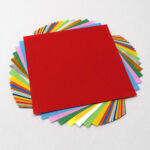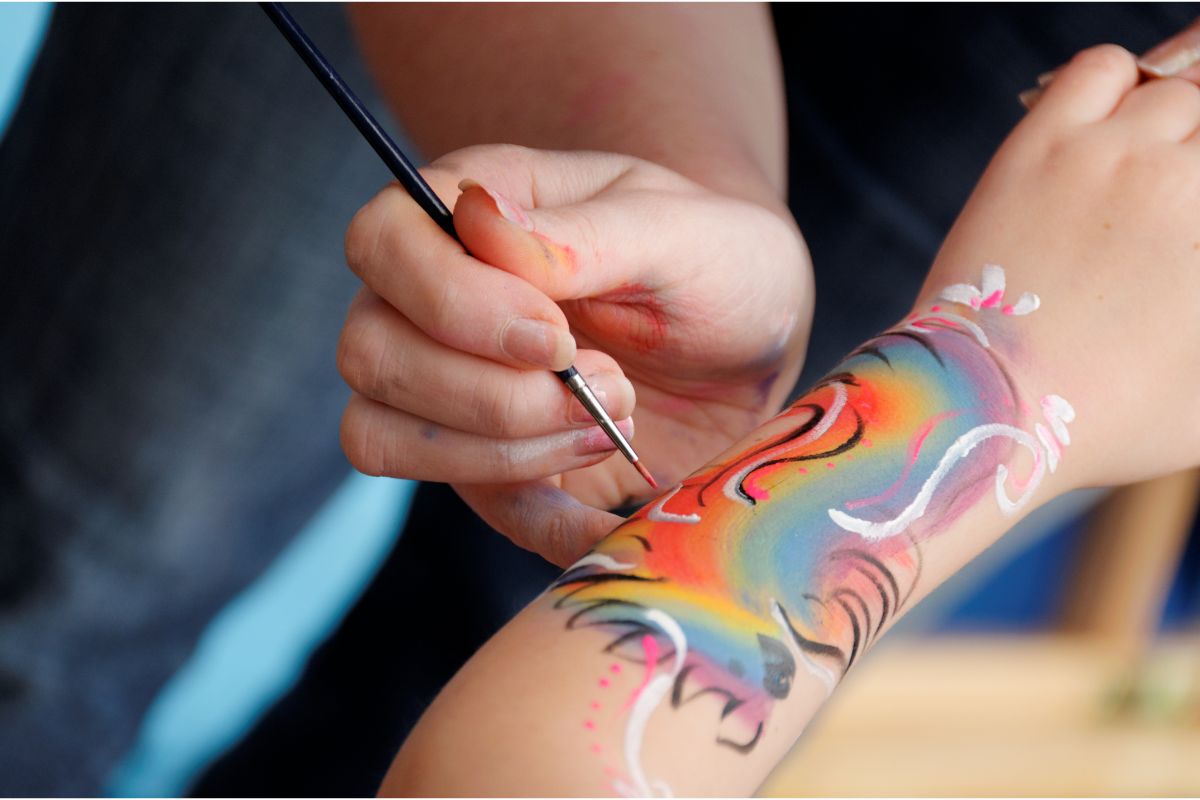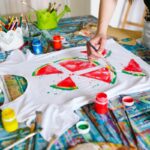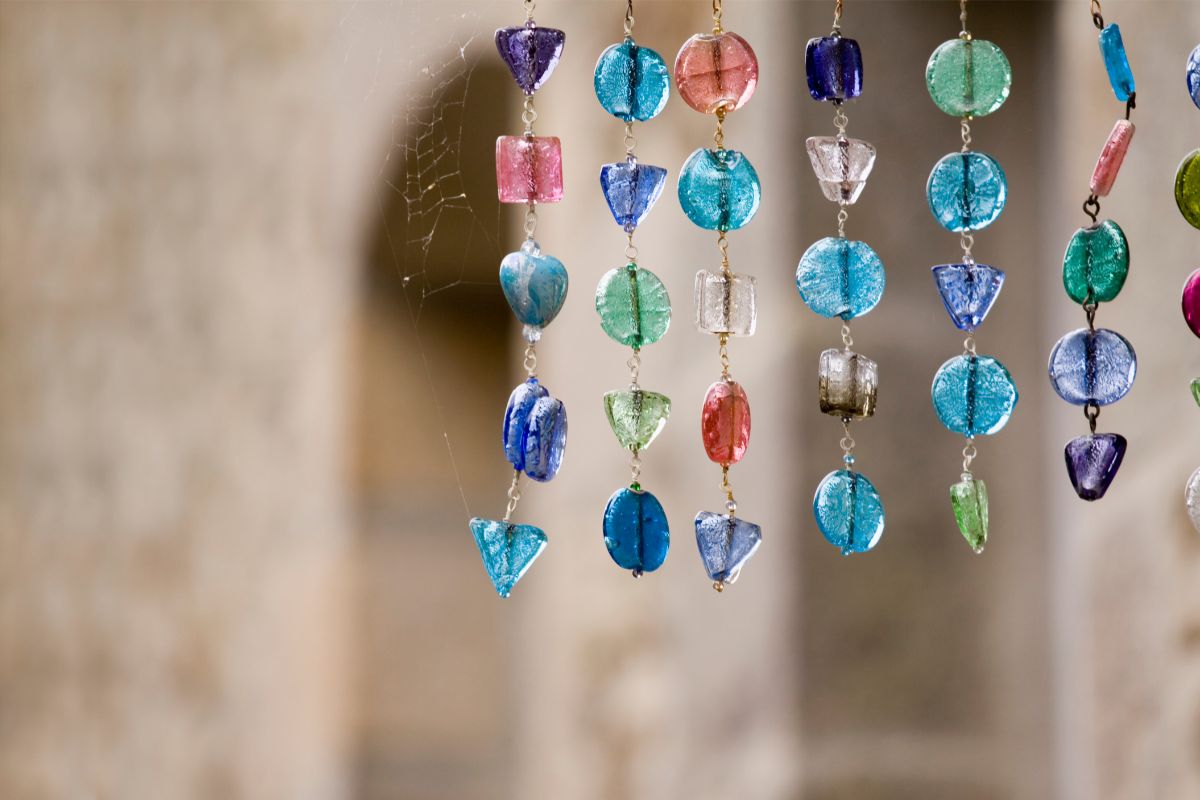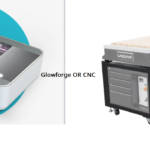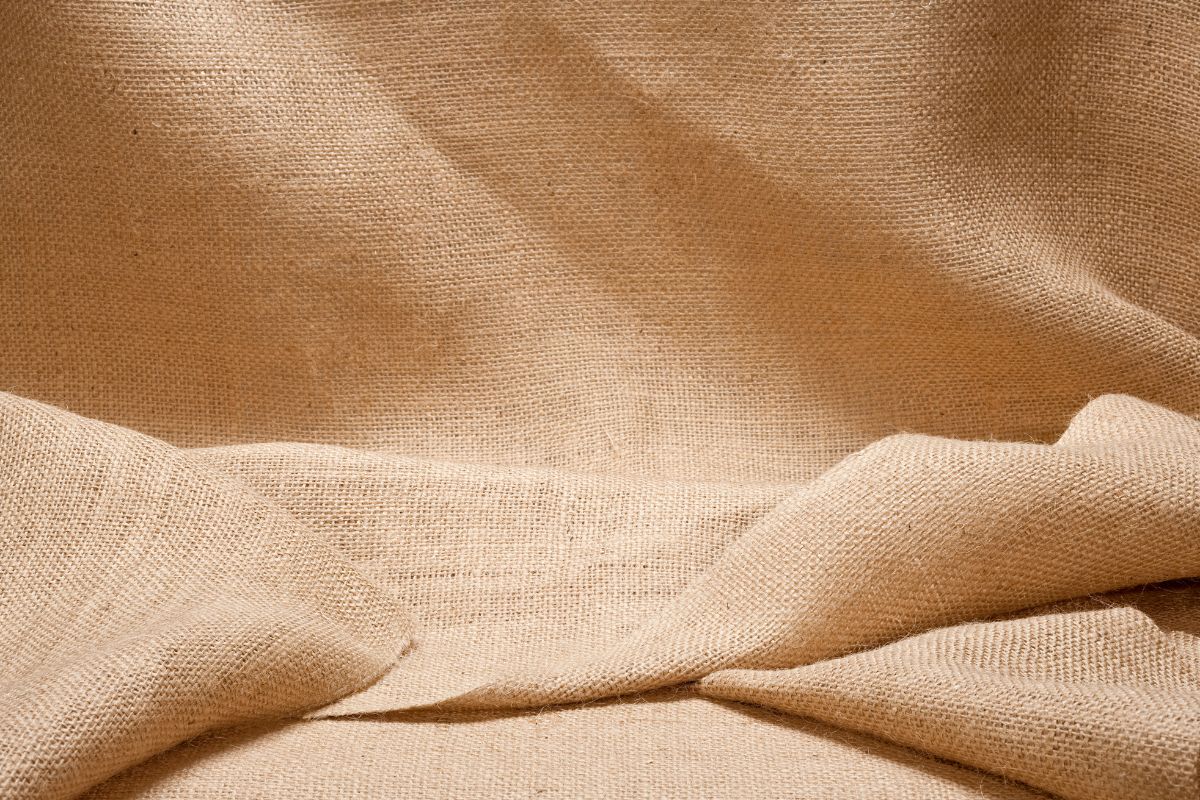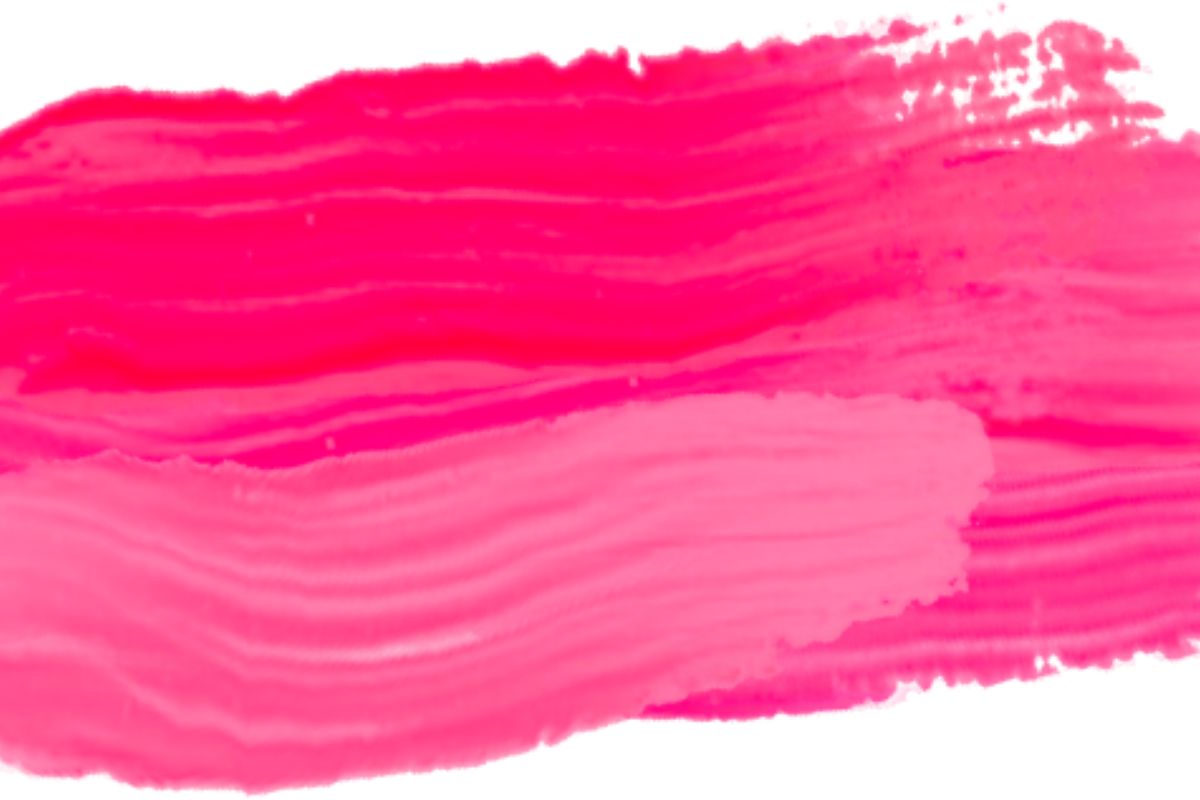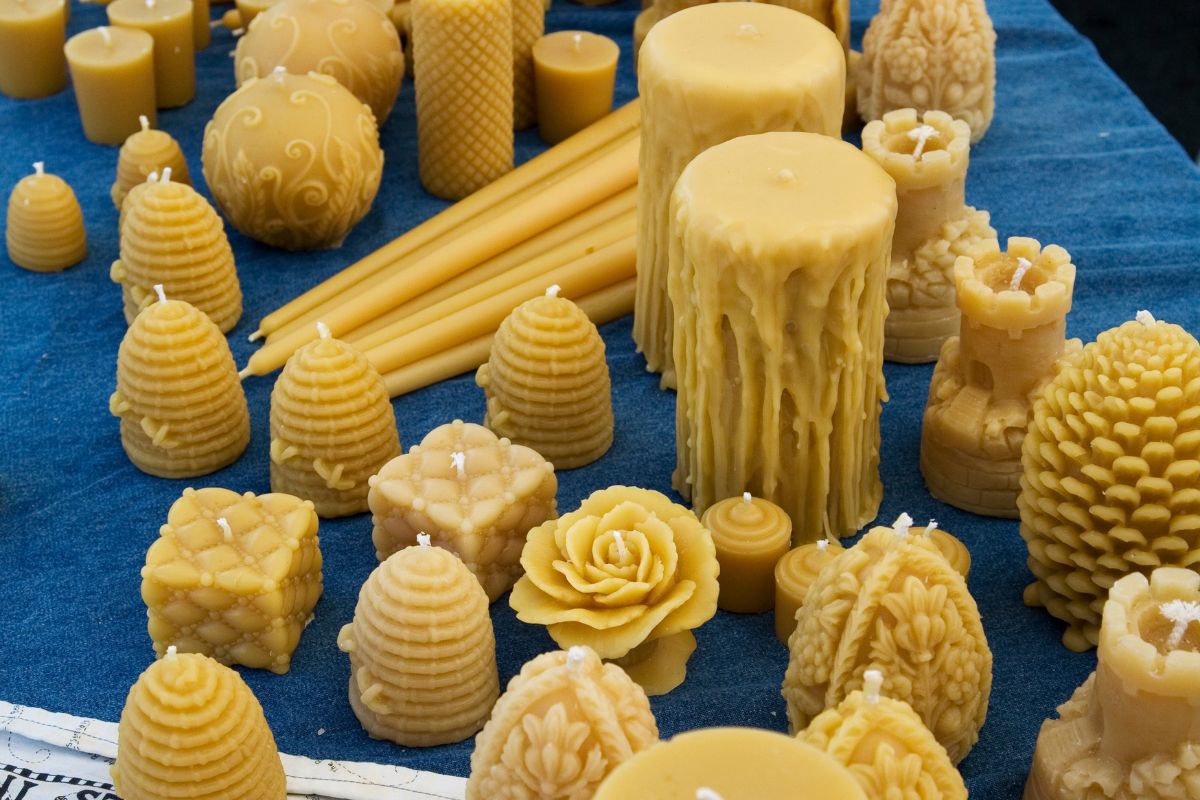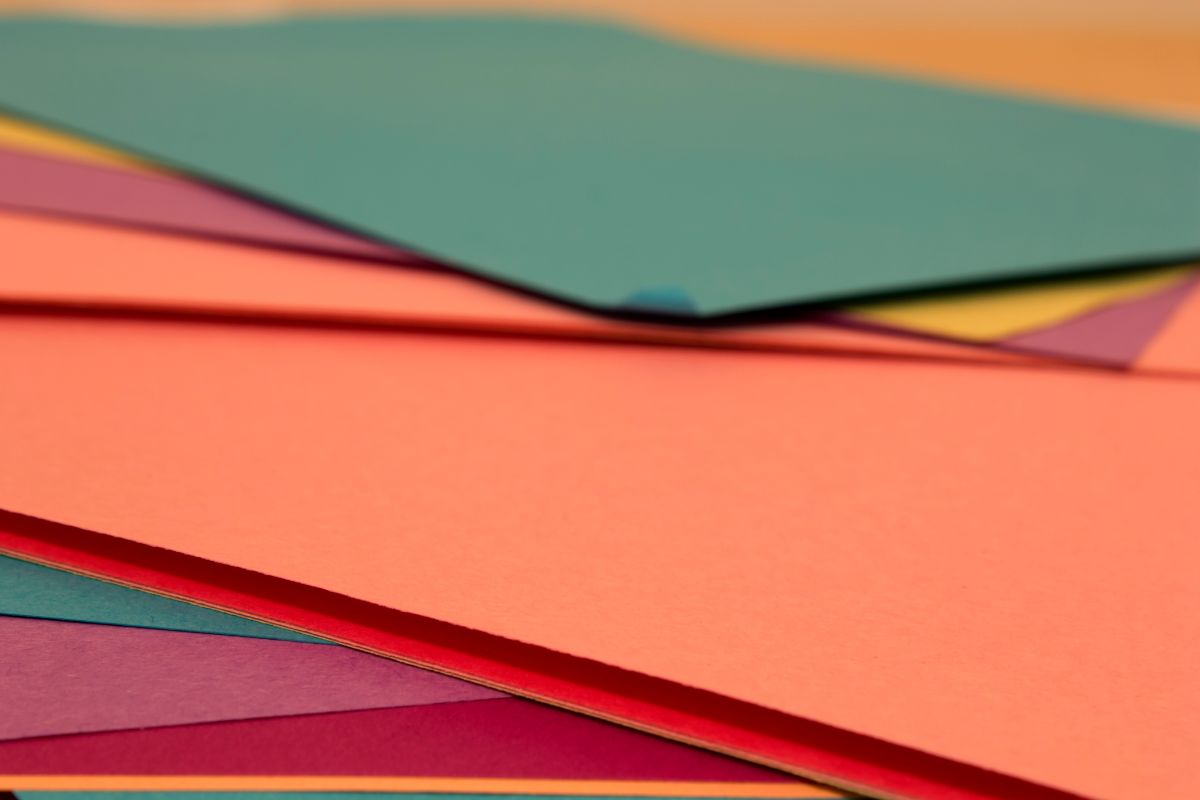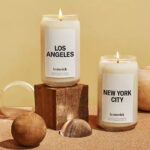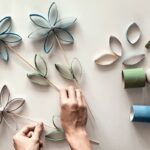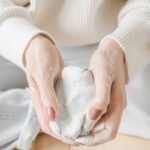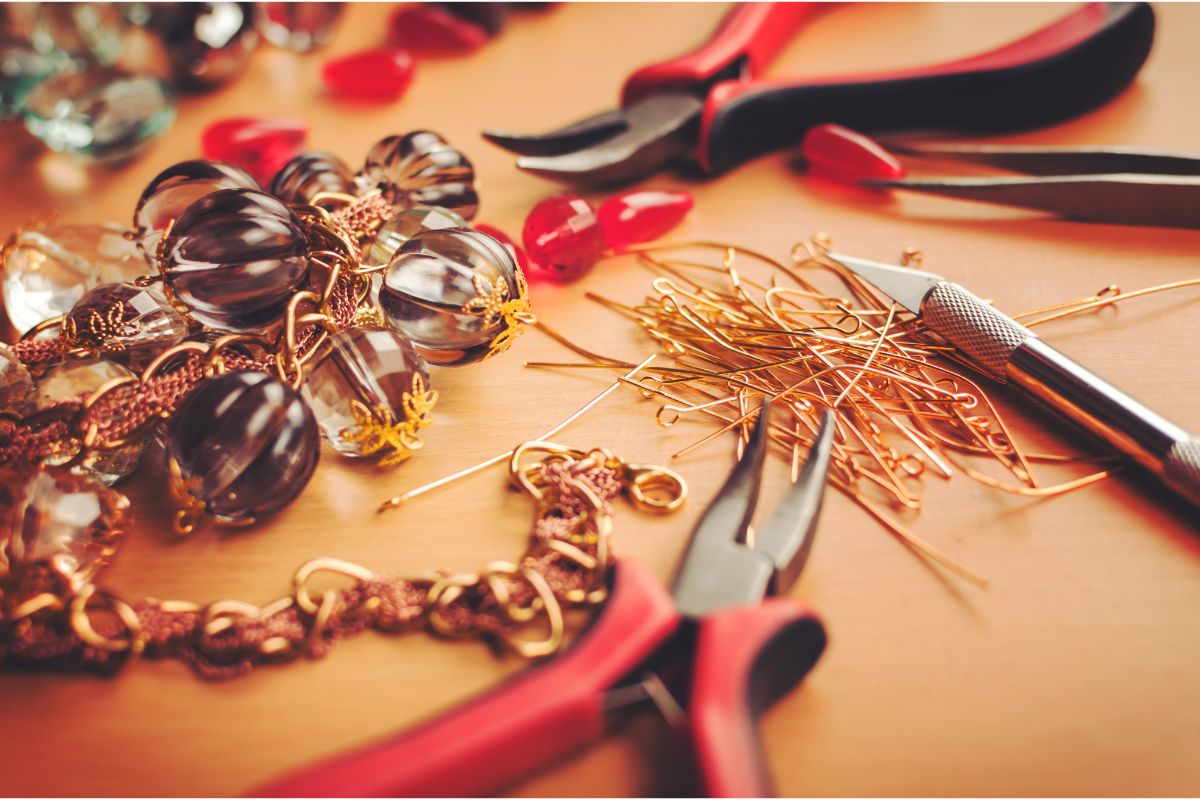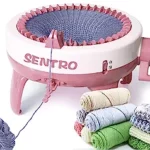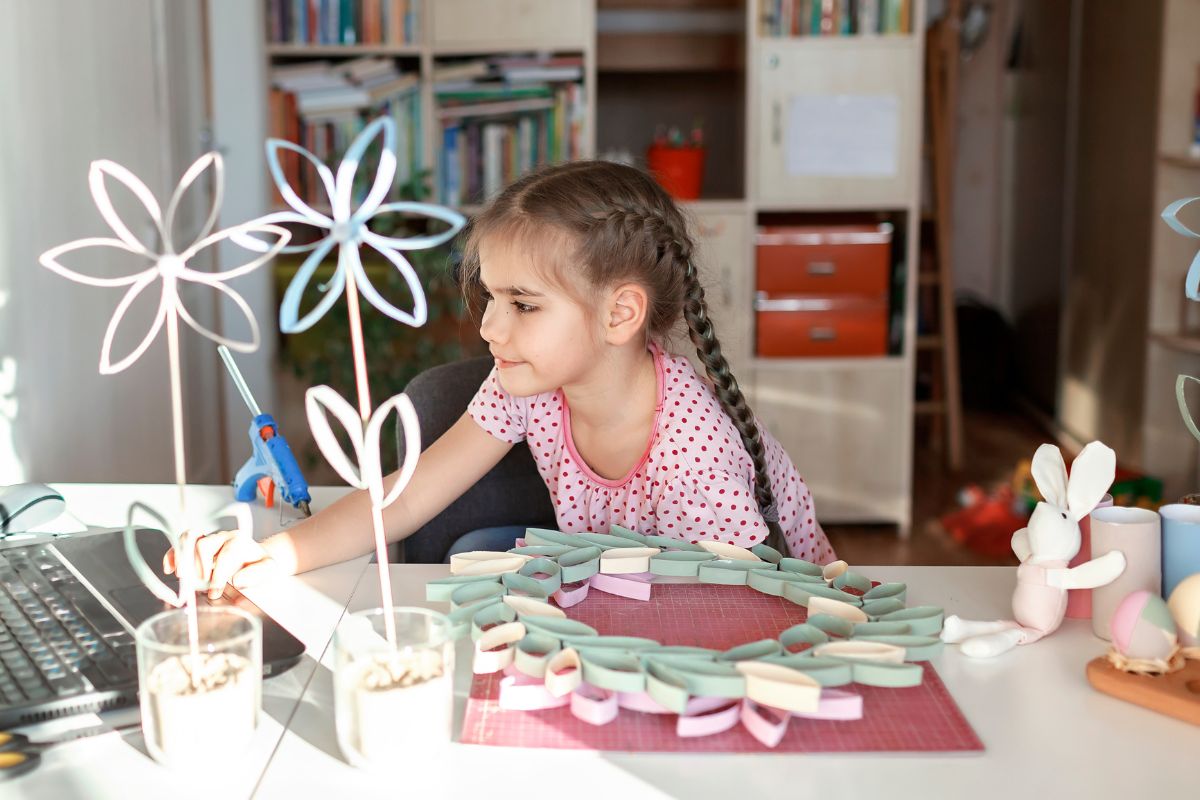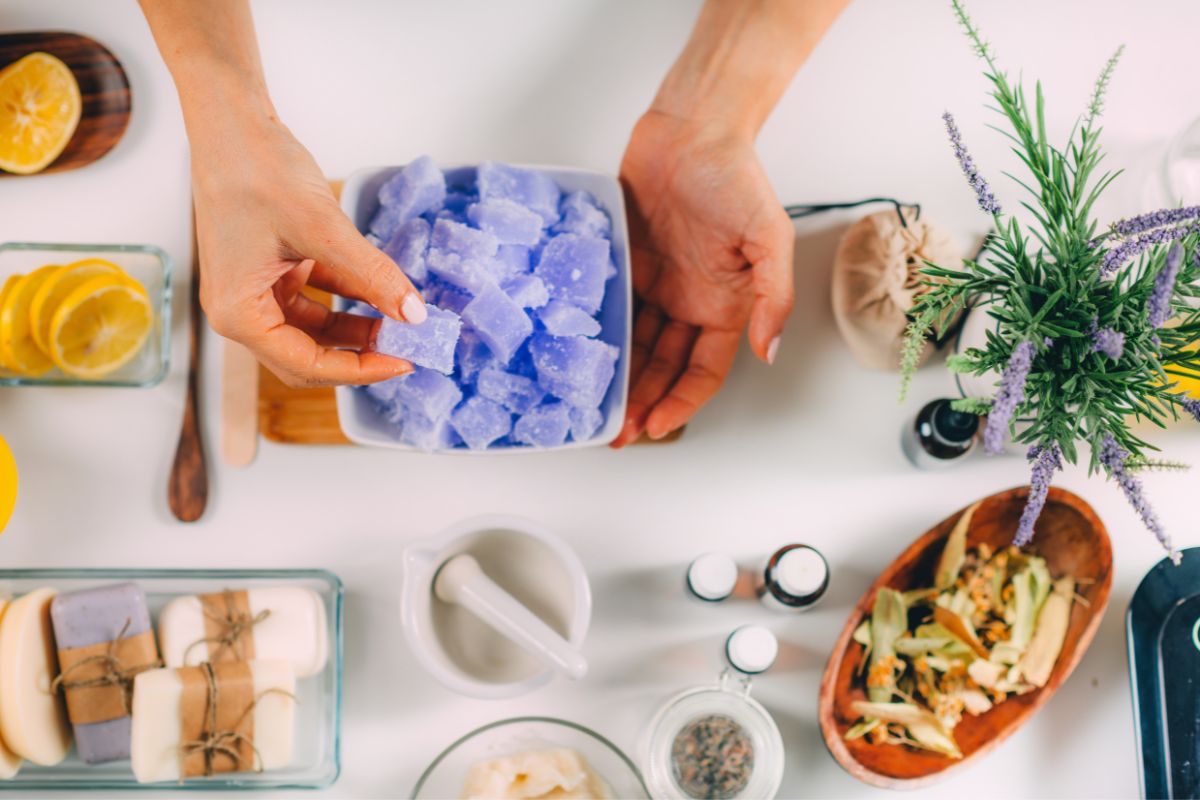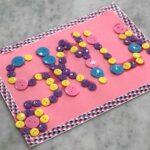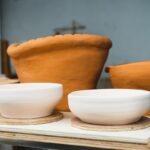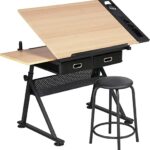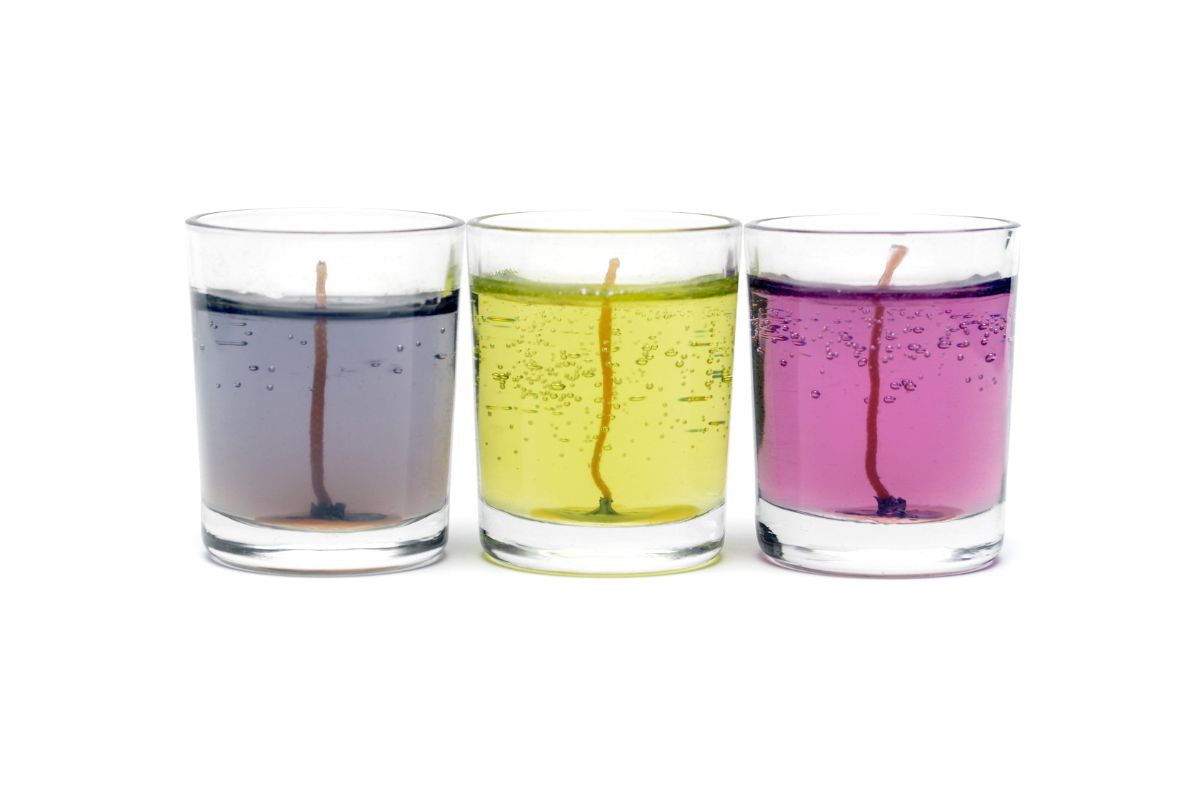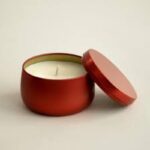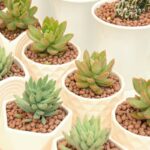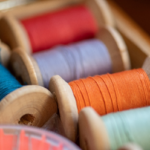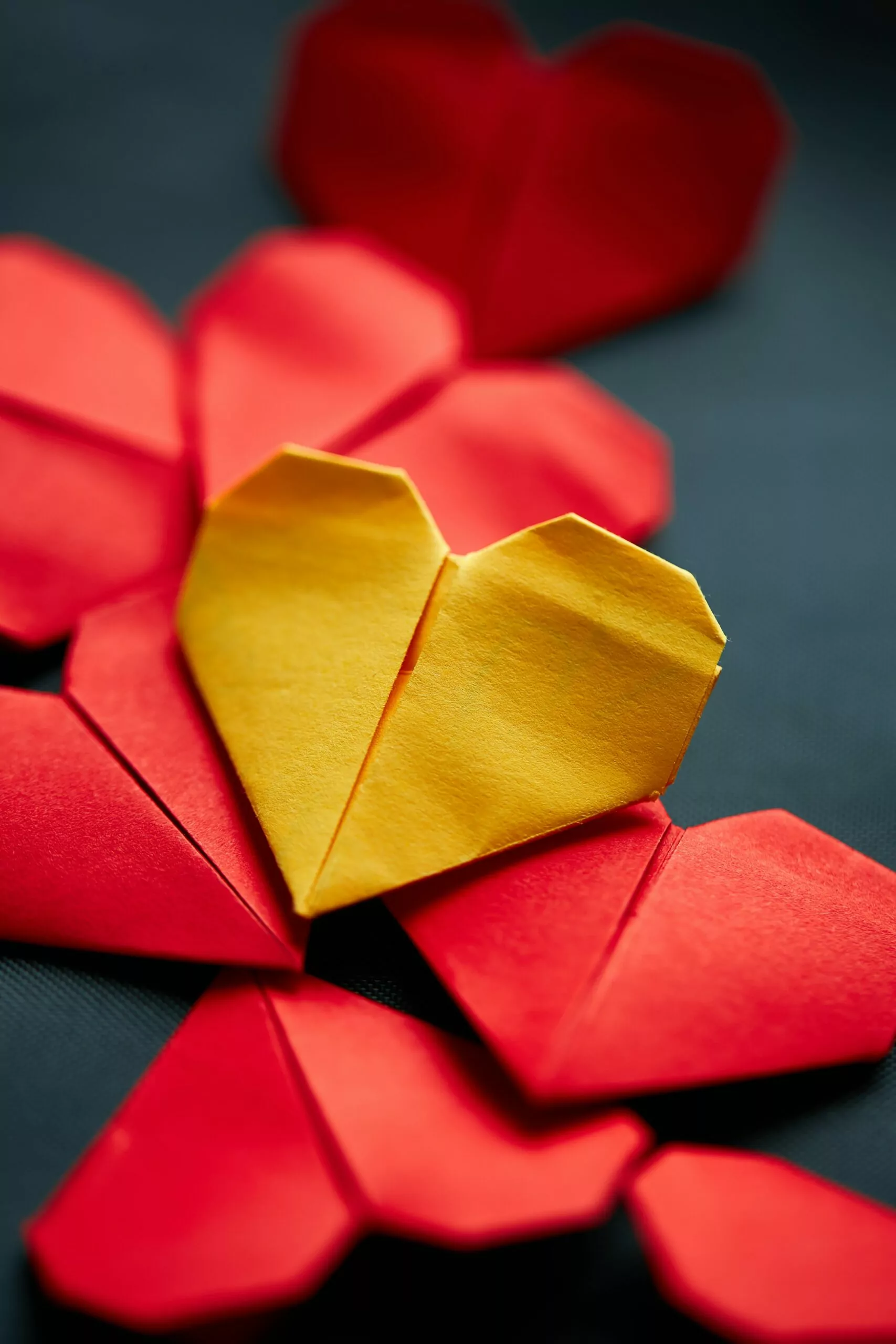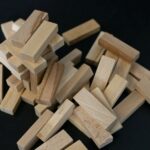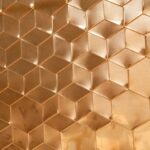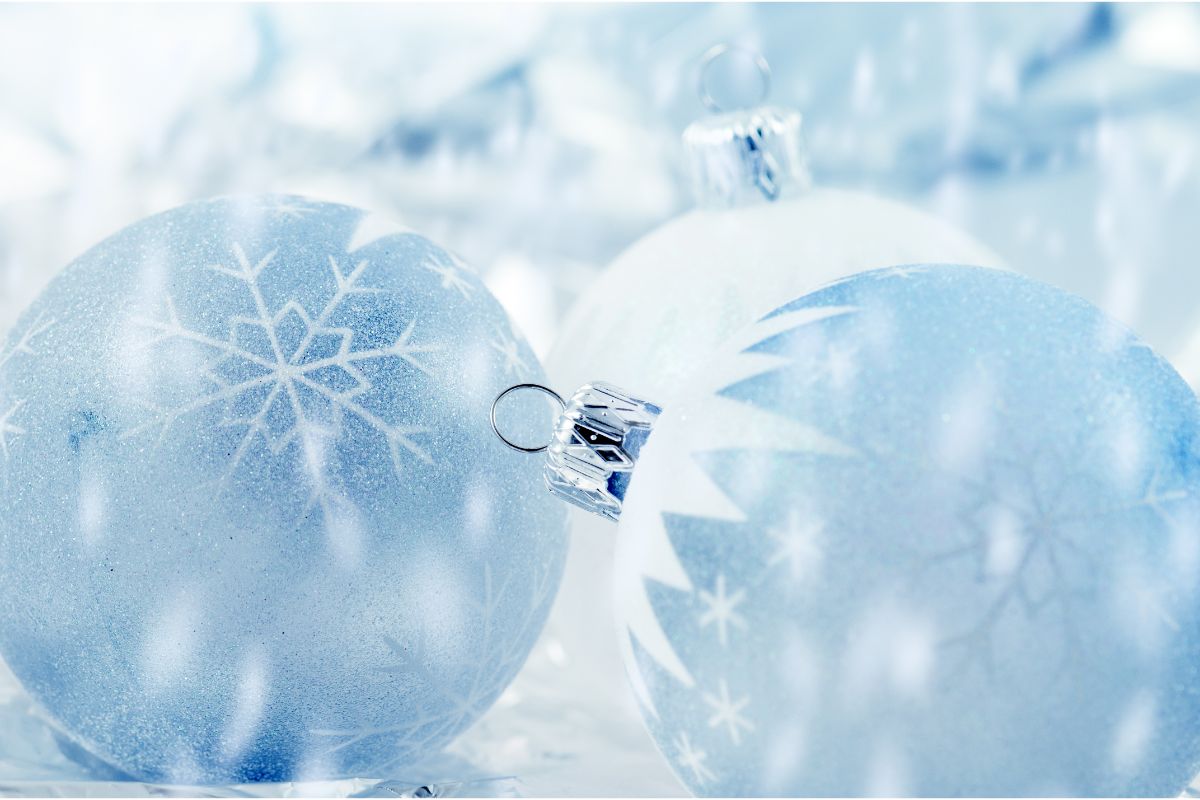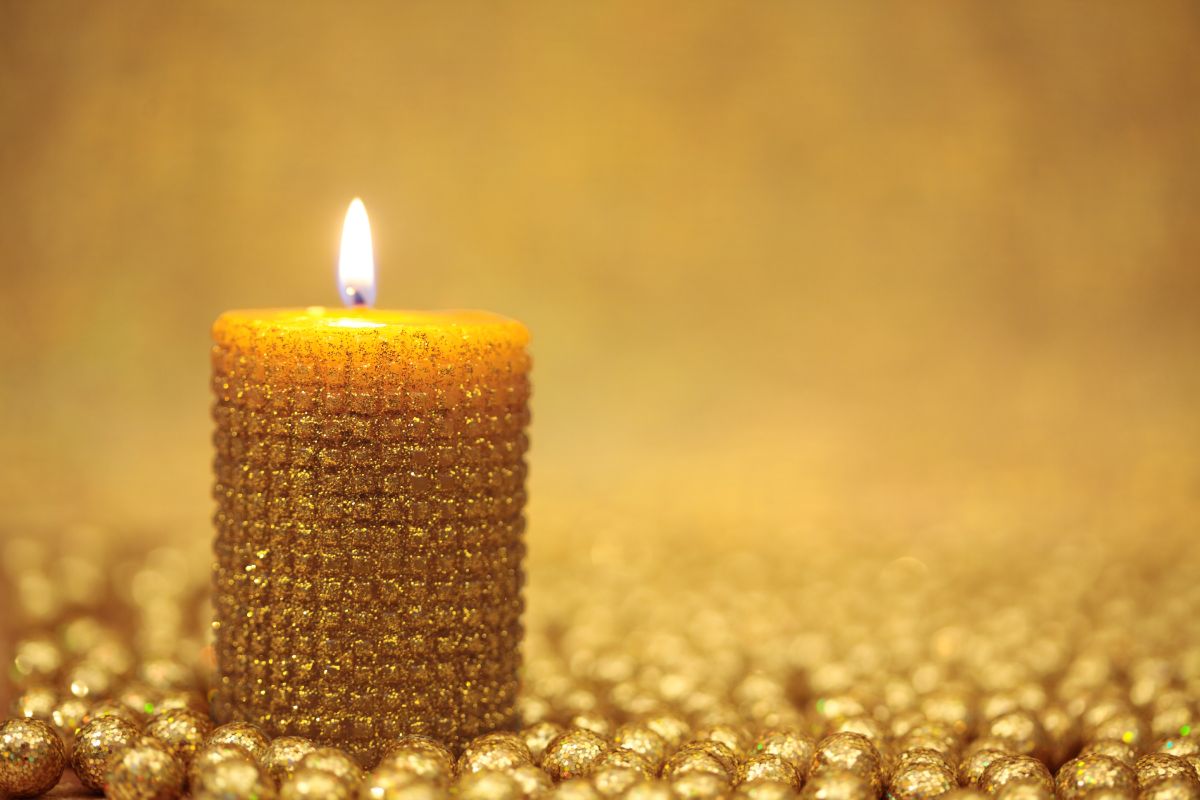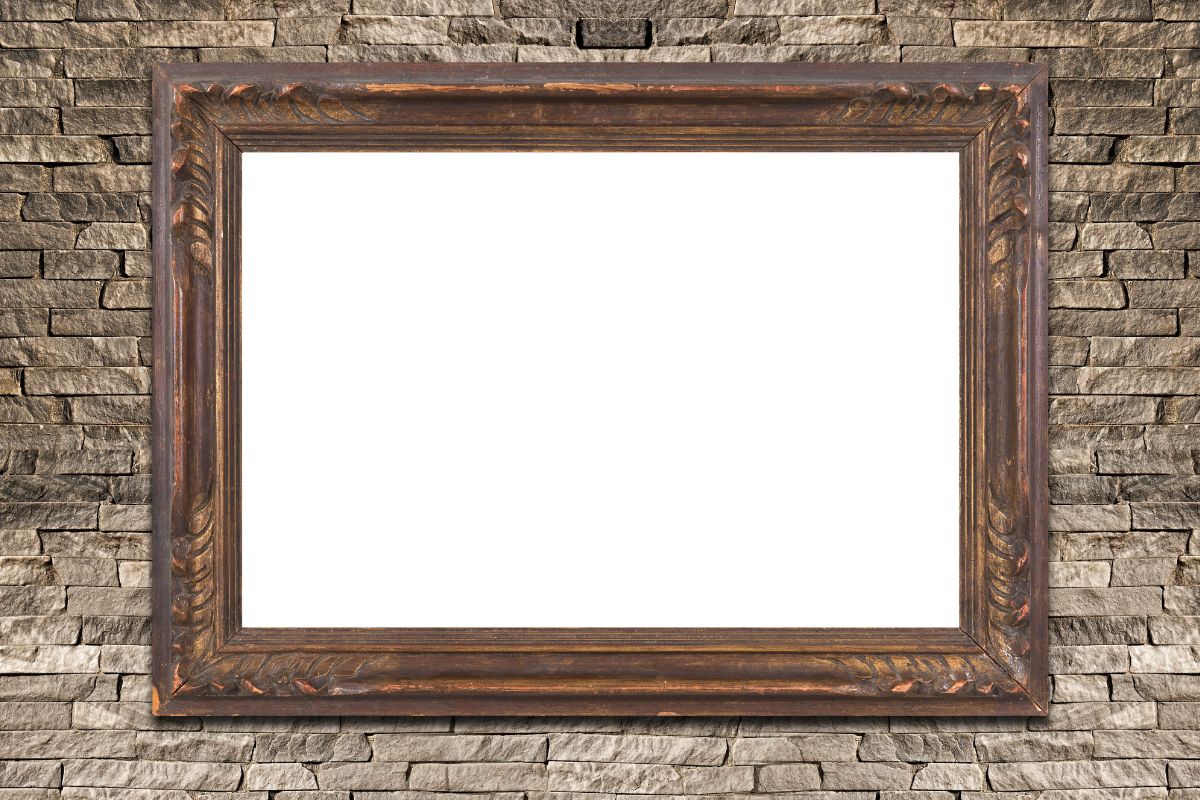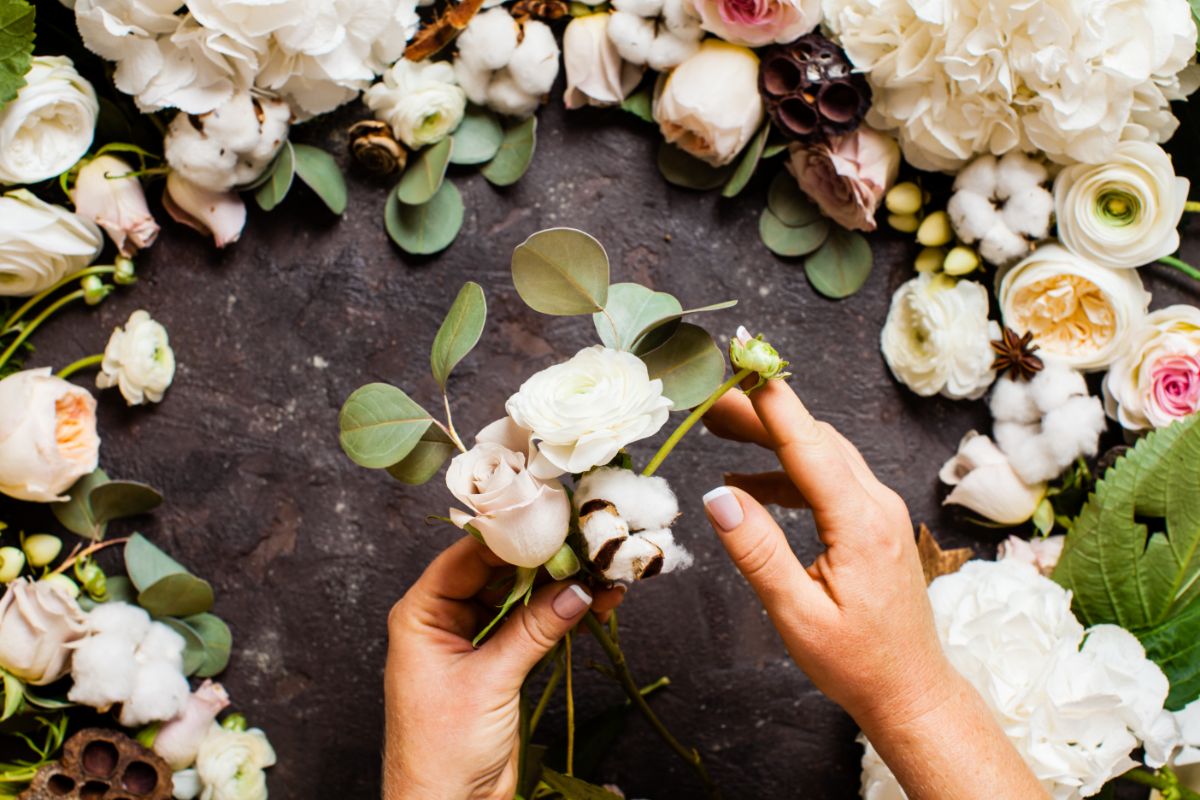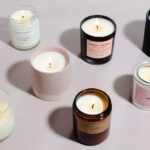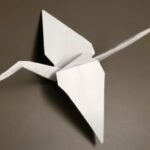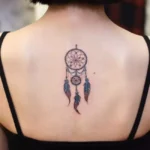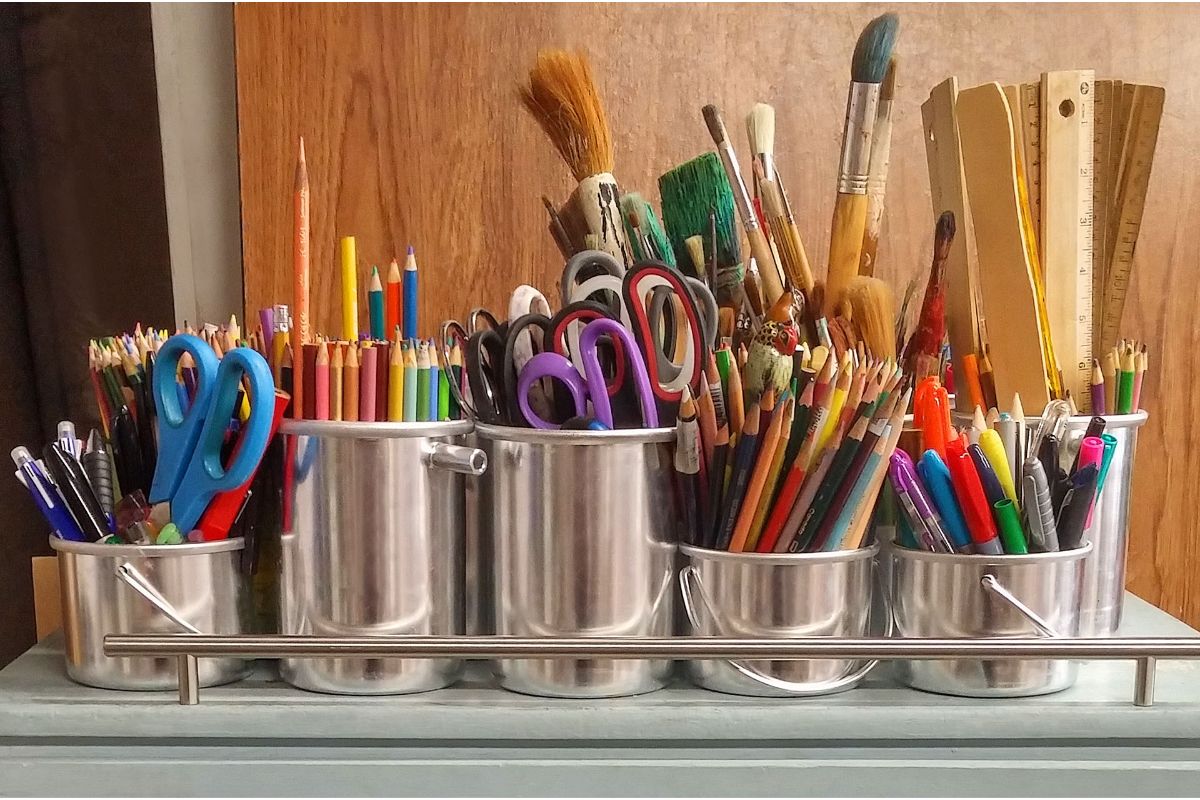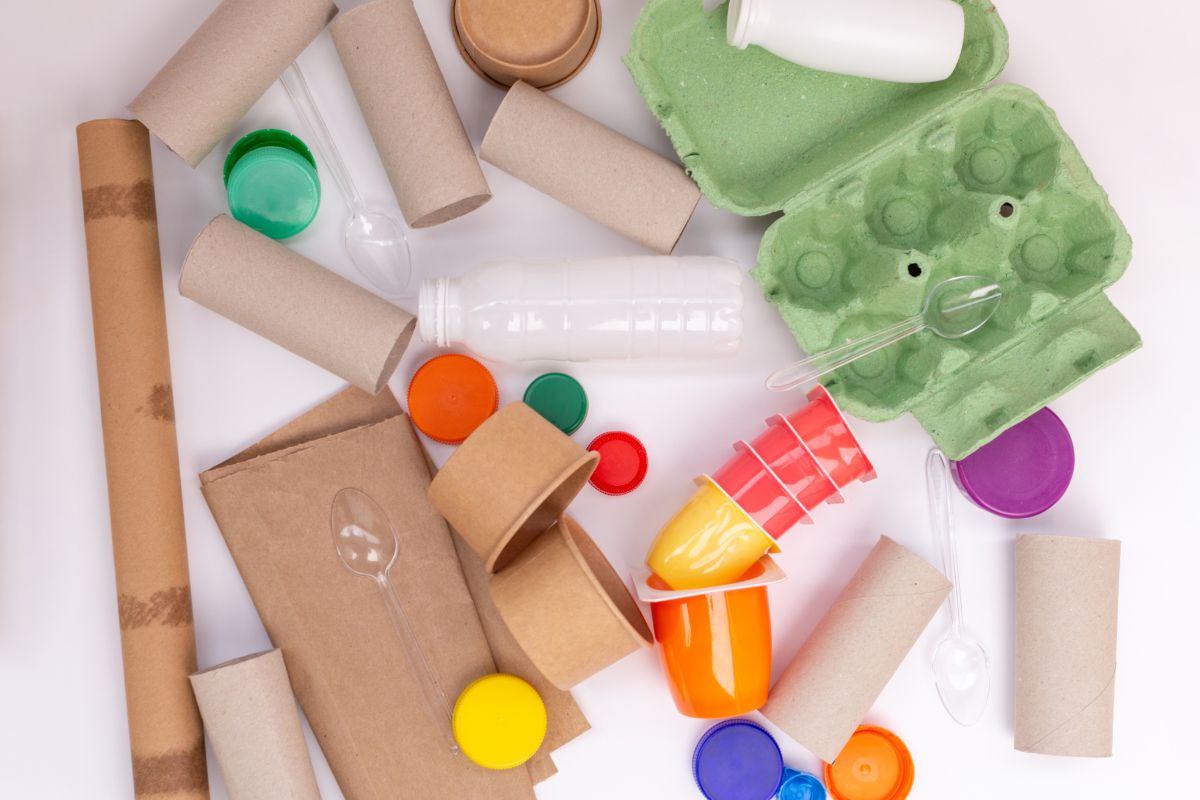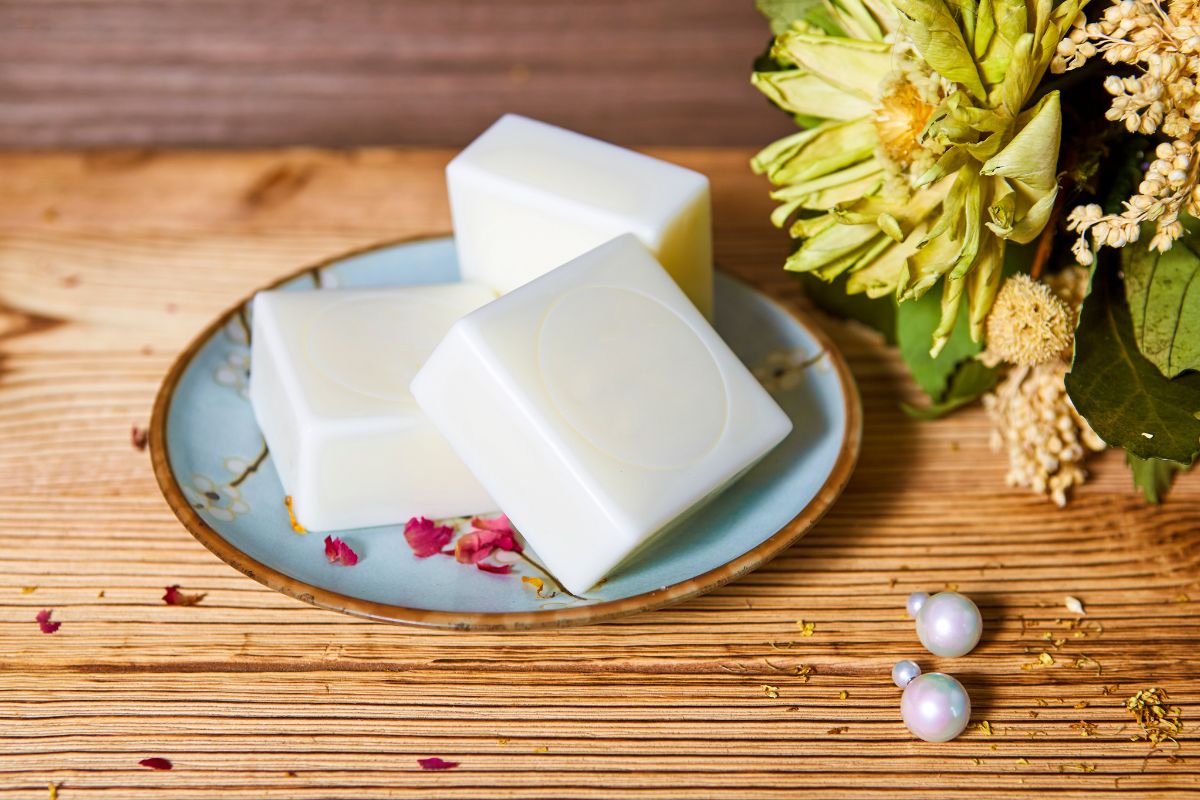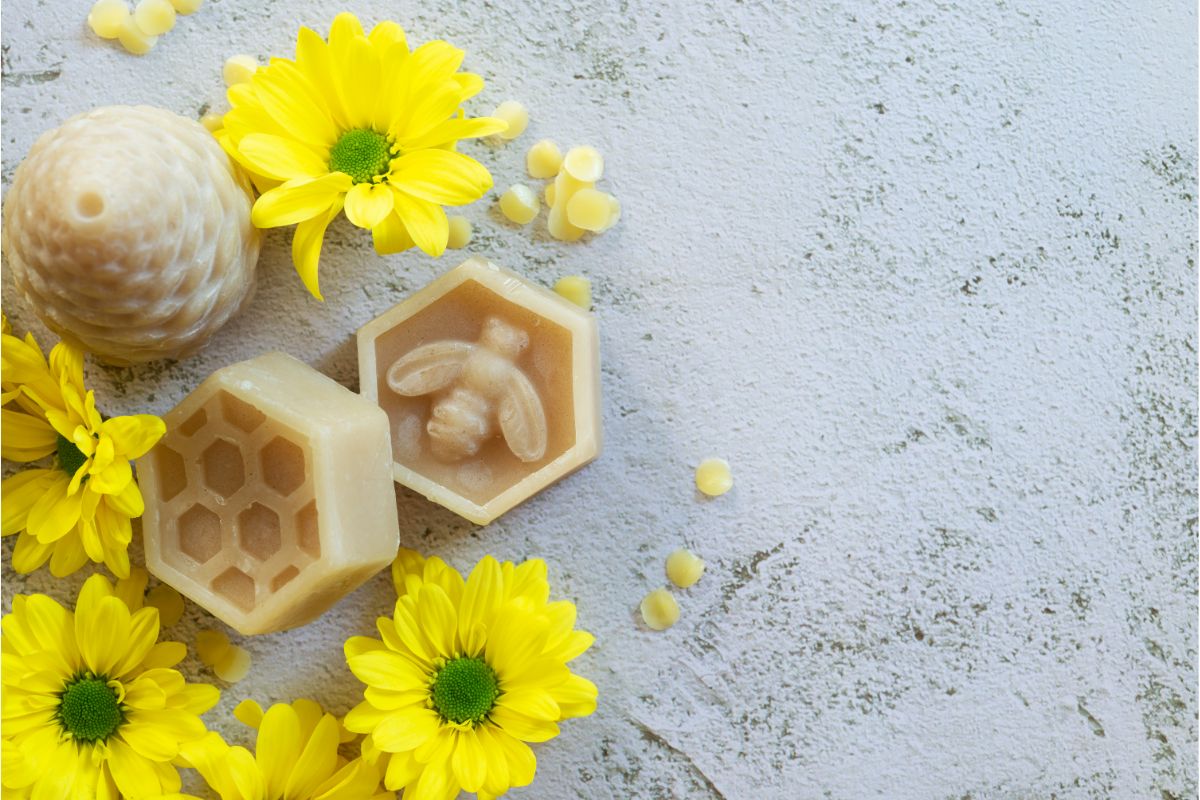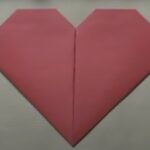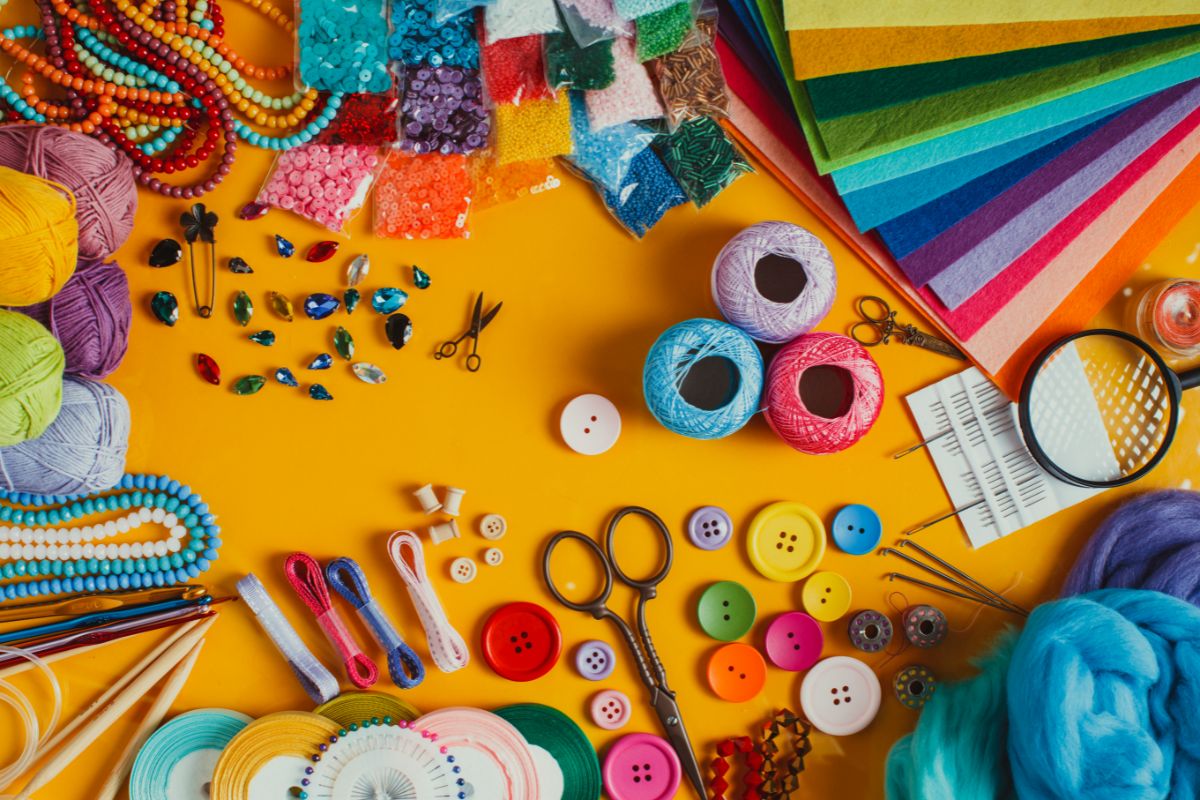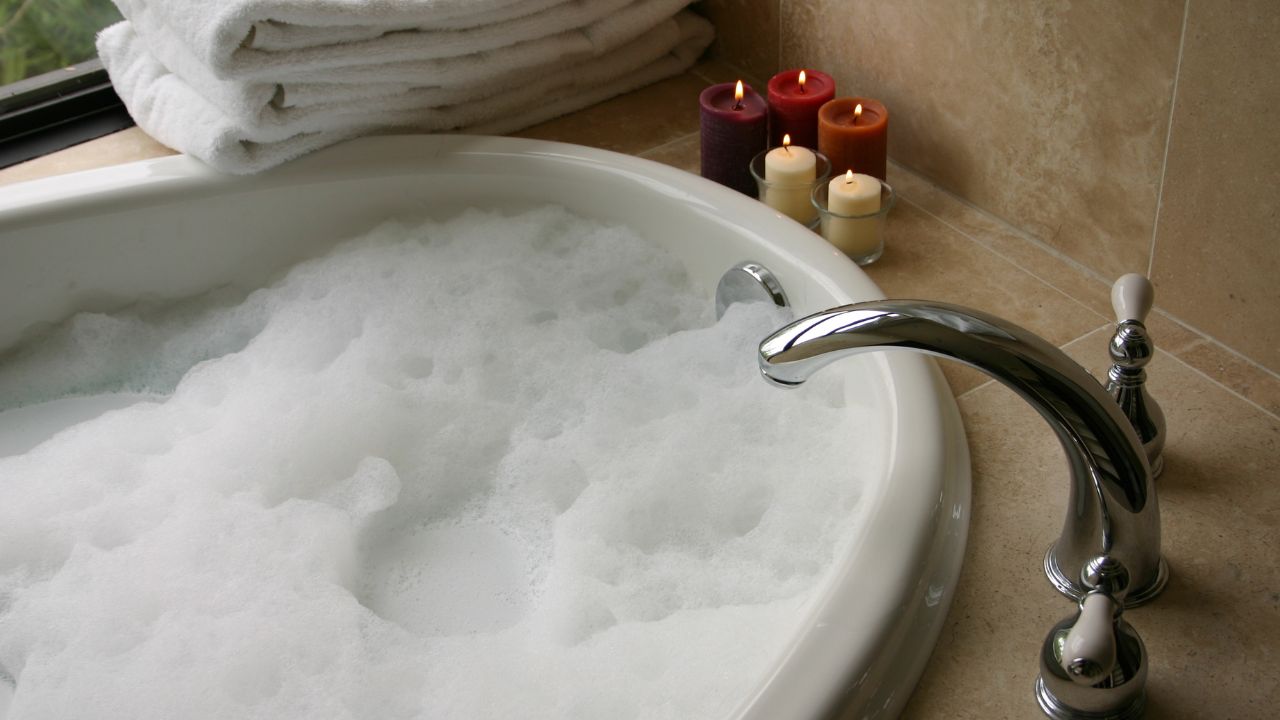If you’re looking for a versatile and beginner-friendly clay to work with for sculpting and pottery, we recommend air dry clay. Air dry clay is a natural, earth-based type of clay that can be left to dry until it solidifies.
This means that you don’t need to fire or bake the clay, which saves time, effort, and money. It’s also safer because you won’t need to work around extreme temperatures.
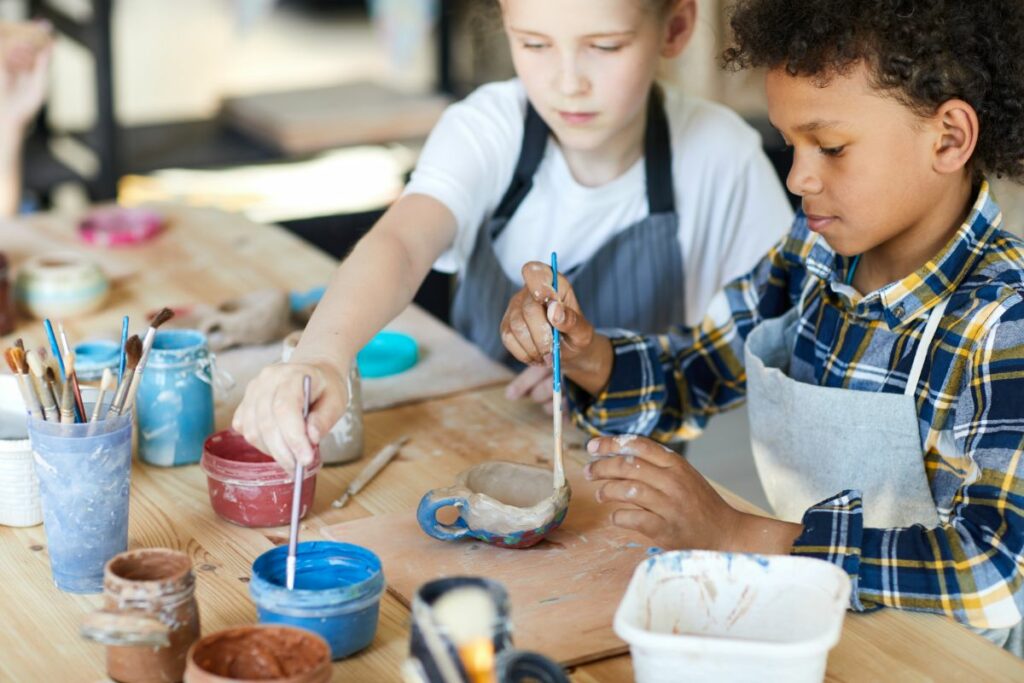
When it comes to painting air dry clay, though, you’ll need to do some research into the best paints, inks, and techniques if you want to avoid damaging the clay and create a long-lasting, professional-looking finish.
Read on to find out which paints to use with air dry clay, when to paint on this type of clay, and how to seal air dry clay for a durable, high-quality finish.
We’ll also be answering some of your questions about painting air dry clay so that you can be confident in your clay crafts moving forward.
The Best Time To Paint Air Dry Clay
One of the biggest mistakes we see people make when painting air dry clay is applying the paint at the wrong time.
Even though you actually have two different options for when to apply the first coat of paint to your air dry clay, new crafters still get the timing wrong sometimes, which can compromise the finished result.
One time when it’s safe to apply paint to your air dry clay project is after the clay is completely dry.
It’s important to wait for the clay to dry fully before you apply the paint if you’re choosing this method because trying to paint while the clay is still wet will probably cause brush marks to appear in the clay.
Even if you don’t damage the clay itself, if you try to paint onto wet clay, the paint is likely to chip or crack after the fact because doing so causes the paint to contract as the clay continues to dry.
You might also end up with uneven color because the pigment in the paint won’t be able to stick properly.
If you don’t want to have to wait for the clay to dry before you apply the paint, there’s also a second option, which involves mixing the paint into the clay while it’s wet, before you shape the clay into your desired form.
This can be complicated, though, since it requires you to mix the paint through very evenly and you’d need to add just the right amount to avoid altering the clay’s consistency.
Therefore, if you’re new to painting air dry clay (which we assume you are if you’re reading this article), it’s probably best to stick to the first method.
Compatible Paints For Air Dry Clay
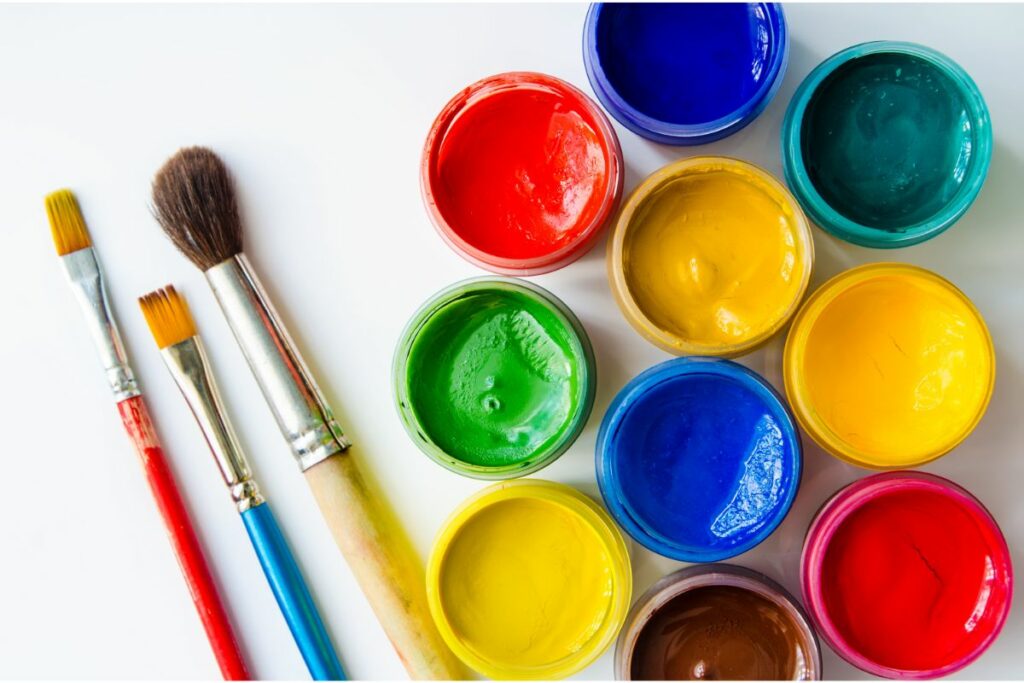
We’ll be talking about the best technique for painting air dry clay shortly, including all of our tips for achieving the best results.
However, before we go into the method, it’s important for you to understand which paints you can use with air dry clay since using an incompatible paint could ruin your project.
If you’re planning to use pens to decorate your air dry clay, make sure to check out the next section, too.
Acrylic Paint
The best kind of paint to apply to air dry clay is definitely acrylic paint. If you’re not sure what paint to get and just want something versatile that will stick and show up clearly on air dry clay, acrylic is the one.
The reason acrylic paint is such a good choice for air dry clay is because it’s thick, so you won’t have to apply multiple coats to hide the color of the clay underneath.
Since acrylic paint also comes in a wide range of colors, you can easily find the exact shade or hue that you want for your design.
When you search for acrylic paint online, you’ll see that it comes in student-grade or artist-grade. Student-grade paint is more affordable, but it’s not the best quality.
On the other hand, artist-grade acrylics are smoother and the pigment is more concentrated so the color will show up better.
If you want to produce a professional-looking finish for your air dry clay, it’s best to choose artist-grade paint.
Another benefit of using acrylic paint on air dry clay is that you won’t have to wait long for it to dry.
In fact, acrylic paint only takes a few minutes to dry, although if you’re going to be applying more than one coat, it’s wise to leave about 30 minutes between coats just to ensure that it is completely dry.
Gouache Paint
If you like the sound of acrylic paint for air dry clay but are looking for something a little thinner, possibly because you’re aiming to produce a more intricate and detailed design, we recommend using gouache.
You can achieve a similar effect to gouache by adding water to acrylic paint, but there’s a possibility that this could go wrong if you accidentally add too much water.
Plus, it can be difficult to figure out how much the pigment of your acrylic paint will be affected by adding water, so it’s easier to buy gouache from the start if this is your aim.
Our favorite way to use gouache paint is to add illustrations to air dry clay, although if your design is going to involve layers, acrylic will be the better choice since gouache is reactivated by liquids being applied on top of it.
You can use gouache and acrylic paint together if you like. This can be really effective if you’re going to be layering as long as you start with the acrylic paint so that you don’t accidentally reactivate the gouache.
Watercolor Paint
Many people try to use watercolor paints on air dry paint because they think it will produce the same classic watercolor effect it does on paper.
While you can absolutely use watercolors on air dry clay, you should be aware that the effect won’t turn out the same as if you used the paint on watercolor paper.
Firstly, the pigment of watercolor paint will lessen as it dries on the clay, so you’ll end up with faint colors. If you want to fix this to some extent, you can add a sealant (more on this in a moment).
If you want to use watercolors on air dry clay, make sure you choose bright and bold colors and make sure not to go overboard with the water so that it doesn’t soak into the clay too much or overly dilute the pigment.
Liquid Ink
We’ll be discussing how to use pens to decorate air dry clay in a moment, but you also have the option of using liquid ink instead of paint.
Ink is fairly easy to apply in a controlled manner with a brush, and if you use a small enough brush, you can create very intricate designs and even write on the clay if you want a word or message to appear on the finished product.
It’s easiest to use either a calligraphy pen or a brush to apply your ink, especially if you have a specific design you want to achieve.
On the other hand, you could opt for alcohol ink to create a multicolored marbling effect. However, this is more complex and you’ll need to wait until after the sealant has been applied to do this.
Tempera Paint
The final paint type we recommend for air dry clay is tempera paint. It can be applied in much the same way as acrylic paint, but we would only suggest using tempera paint on items that will never need to be washed.
The reason we don’t recommend tempera paint for clay items that will be washed is because tempera can be washed off once it dries, which isn’t the case with acrylic paint.
Plus, tempera paint loses some of its pigment during the drying process, and it has a matte finish once it dries rather than the glossy finish you can expect from acrylic paint.
With that being said, if you’re not going to be exposing the paint to any water and you are looking for a matte finish in a muted color, tempera paint might be exactly what you’re looking for.
Pens That Work On Air Dry Clay
If you’d rather use pens than paint when it comes to decorating your air dry clay, you also have a few different options to choose from.
Just as acrylic paint is probably the best paint overall for air dry clay, acrylic markers are one of the best choices for decorating this type of clay.
Acrylic markers are permanent, so you don’t have to worry about your art wearing off, and it’s easy to create detailed designs with these.
While you might not automatically think of gel pens as a good option for air dry clay, as long as the clay has completely dried, you can use gel pens to create very detailed designs.
These pens might actually be the best choice if you want to use ink to create very fine lines and small dot work.
Watercolor pencils, and even regular colored pencils, are suitable for drawing on air dry clay. However, in order for them to work properly, you’ll need to activate them with a wet brush.
The key here is for the brush to be damp rather than dripping wet so as not to affect the clay underneath or dilute the pencil color.
If you would like to use pastels to decorate your air dry clay projects, you can do so, but it will be best to apply the pigment to your finger first before transferring it from your finger onto the clay with a gentle rubbing motion.
Please don’t be tempted to use sharpies or other types of felt-tip markers to draw on your air dry clay, though. These are likely to bleed, especially if you’re planning to apply sealant or varnish over the top.
We’ve also tried using precision markers such as fine liners before, but for some reason, these always seem to dry out after a few minutes of drawing on the clay.
Air Dry Clay Painting Technique
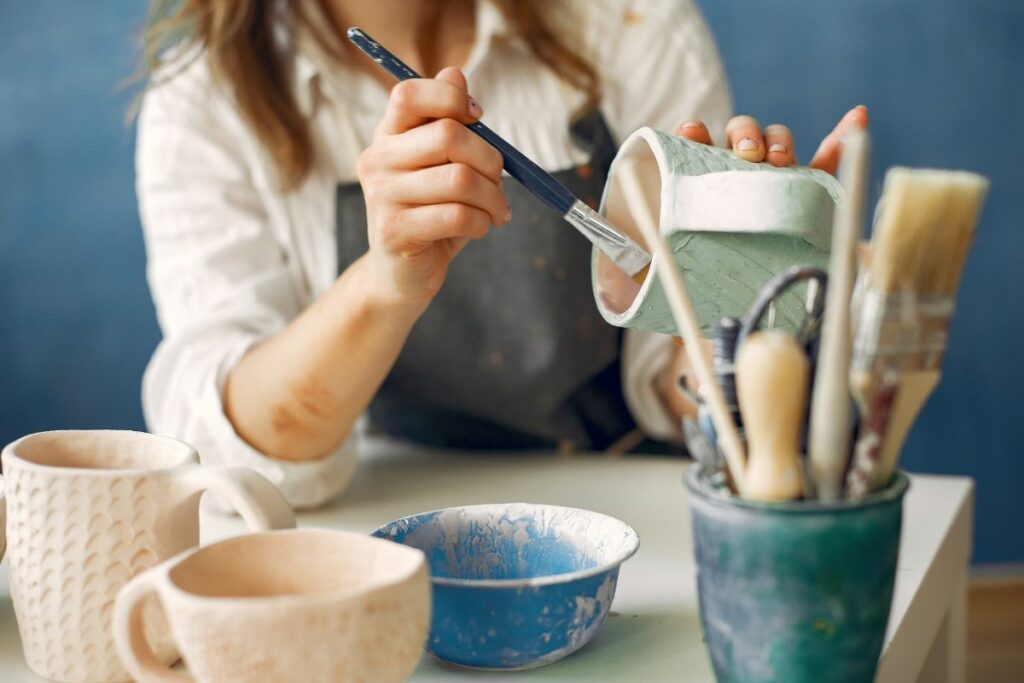
Now that you know which paints are suitable for air dry clay, it’s time to discuss the best technique and method for applying the paint.
This is almost as important as choosing the right paint because approaching the painting in the wrong way can lead to poor results.
Drying The Clay
The first thing to bear in mind is that you need your clay to dry completely before you apply the paint.
Of course, this won’t apply if you’re going to be mixing the paint into the clay before shaping it, but this isn’t the method we’re focusing on today because it’s not particularly beginner-friendly.
The drying process could take up to 72 hours, although depending on the thickness of your creation, it could be done within 24 hours.
If in doubt, always leave the clay to dry for longer rather than taking your chances since applying paint too soon could ruin your project.
Preparing The Dried Clay
If, once your clay project has dried, you notice any bumpy, rough, or cracked areas, you’ll need to take the time to fix these before you start painting.
Rough areas can easily be fixed using some fine-grit sandpaper, but you’ll need to be very careful and methodical about this to avoid damaging the structure of your clay item.
You should also make sure to dust off the clay after sanding since painting over dust won’t lead to great results.
The First Coat
Once you have allowed the clay to dry fully and removed any imperfections, it’s time to apply the first coat of paint.
It’s always better to apply thin coats, even if this means needing to apply more coats overall, because thin coats will dry more quickly and evenly.
If you start slapping the paint onto the clay too thickly, you could end up with drips. If you’re using ink or watercolor, bear in mind that excess water will damage your clay and could even break it, so use this sparingly, too.
Make sure that the first coat has dried completely before you apply any further coats.
Varnishing
You may want to apply varnish to your clay project to protect the paint and make it look more professional.
Again, don’t go overboard with how much product you add, and ensure that all the paint has dried to the touch before you try to put varnish on top.
Leave the varnish enough time to dry before you handle the item again. To find out how long it will take to dry, check the instructions on the container because different varnish types and brands may have different drying times.
Applying Sealant To Air Dry Clay
If you’re going to be applying sealant to air dry clay, make sure to do this after you have applied the paint rather than before.
Clay is a porous material, which means paint will stick to it properly. If you apply the sealant first, the porousness will be minimized and your coats of paint will be more likely to chip.
You can use a brush to apply the sealant varnish, or if you’re using epoxy resin, a wooden tool might be better. Alternatively, you can dip the clay item (as long as it’s dry) straight into the sealant and let the excess run off before leaving it to dry.
This is an especially good method if you want to avoid leaving any brushstrokes in the finish of your clay project, but you’ll need to keep an eye on the varnish as it dries and catch any drops when they start to form.
Spray varnish is also an option, but you’ll need to take safety precautions, especially when it comes to ventilation, if you want to use this method since inhaling varnish can be very harmful.
Frequently Asked Questions
Can You Paint Onto Wet Clay?
No, you should not paint clay while it’s still wet. This is really important because clay shrinks as it dries, and if you paint while it’s wet, the paint will shrink with the clay, leading to cracks and chips.
Painting clay before it has dried will also lock in the moisture, and you might eventually see mold coming through the paint.
Can I Waterproof My Air Dry Clay?
You can make your air dry clay resistant to water by painting it with acrylic paint, which repels water. Epoxy resin or another type of sealant will also increase durability, although it won’t ensure water resistance.
Why Is My Paint Peeling Off Air Dry Clay?
If you’ve noticed that the paint on your air dry clay project is peeling, it’s probably because you didn’t leave either the paint or clay to dry properly. It could also be because you left some dust on the clay after you sanded it.
Conclusion
You can use various different types of paint on air dry clay. The best overall is acrylic paint, but depending on the effect you want to achieve, you can also use tempera paint, watercolors, gouache, or liquid ink.
Alternatively, if you’d prefer to use a pen rather than a brush, you could decorate your air dry clay projects with acrylic markers, gel pens, or even pastels and watercolor pencils.
You must make sure that your clay has dried properly before applying the first coat of paint, and each layer of paint should be allowed to dry fully before another is applied. For added durability, finish with a coat of varnish.
- Cricut Hat Press: A Comprehensive Guide on Usage - August 13, 2023
- Unlocking Creativity with the Cricut Joy: A Comprehensive Guide - August 12, 2023
- The Ultimate Guide to the Cricut Maker Bundle - August 11, 2023

